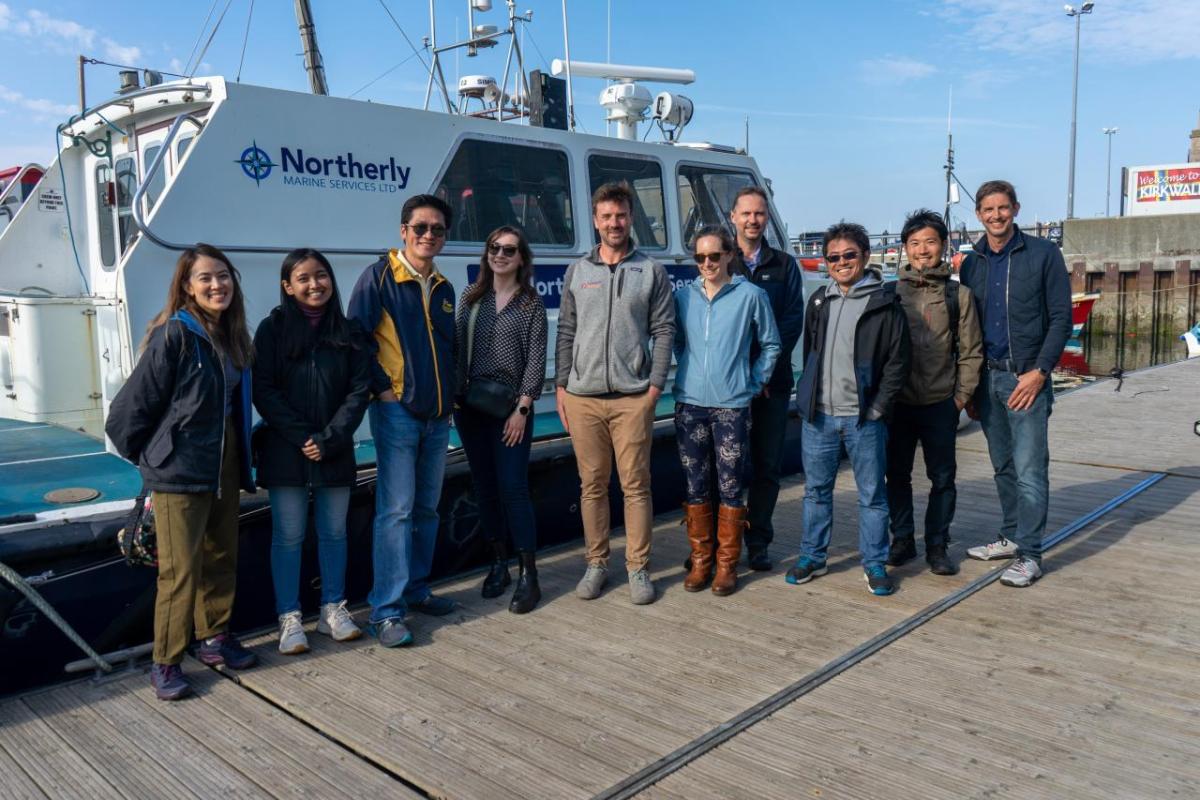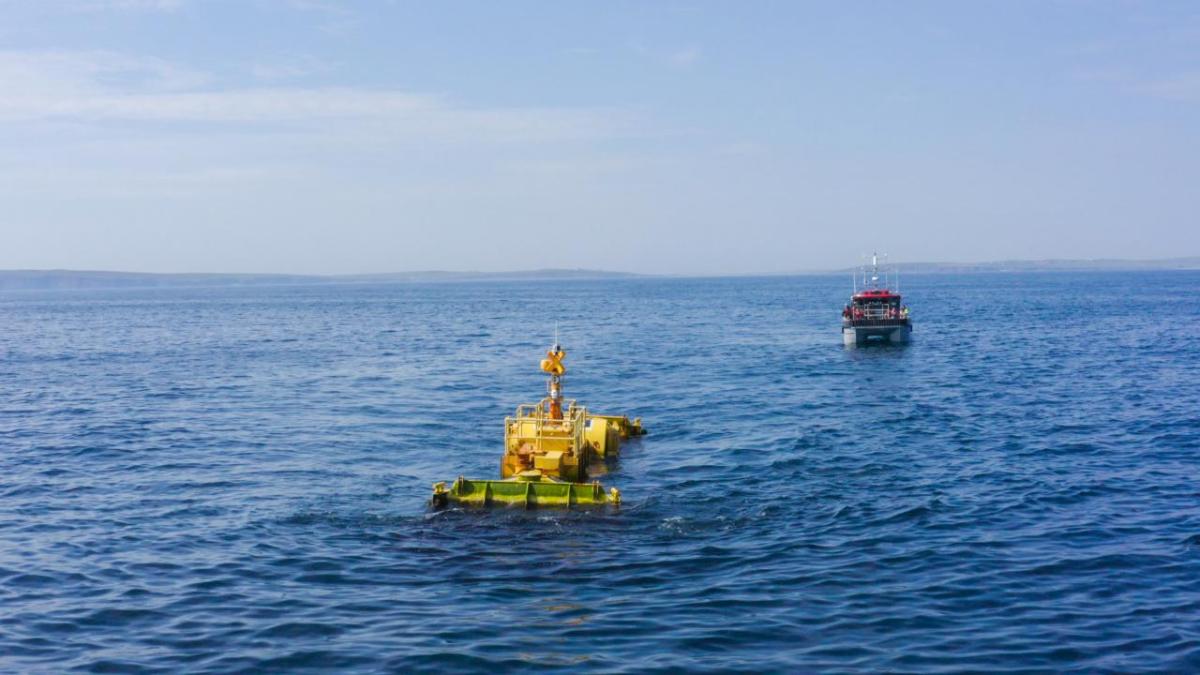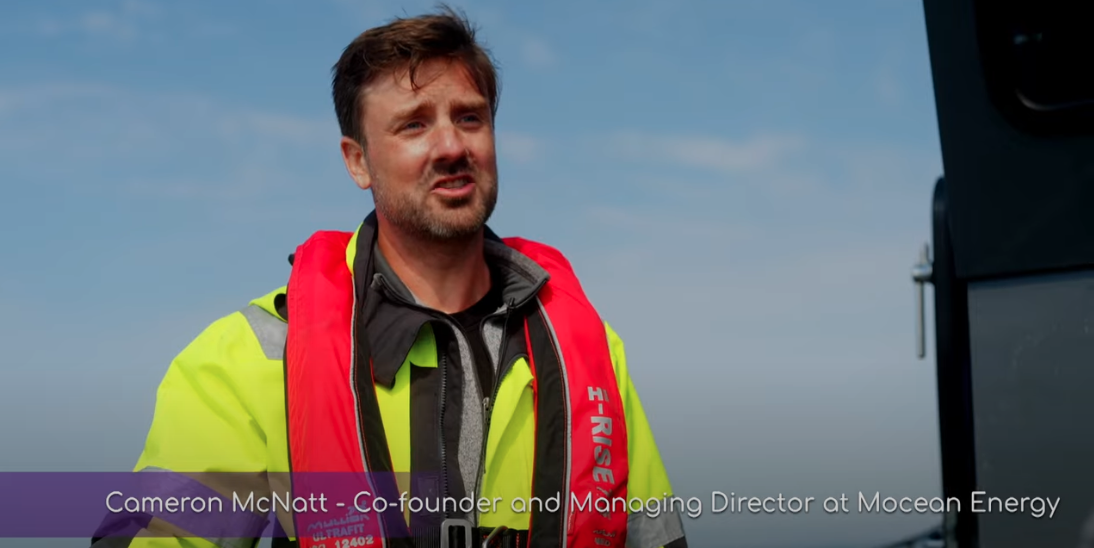Waving Goodbye to Fossil-Fueled Subsea Ops
This story first appeared on Baker Hughes’ Energy Forward Stories.
A collaborative venture brings renewable wave power, flexible energy storage and energy technology on an electrifying journey to the bottom of the sea.
In August 2023, an alliance of technology companies celebrated the first four months of continuous renewable energy supply to Baker Hughes’ subsea communications and control systems. Renewables for Subsea Power (RSP) is a $2.4 million first-of-its-kind demonstration system that promises to provide clean, reliable offshore energy to marine based projects. Think brownfield extensions to oil-and-gas fields, greenfield carbon capture and storage developments, support and remediation of shore-to-seabed umbilicals, and operation of autonomous underwater vehicles for monitoring and service of subsea equipment.
Every deployment of new technology into ocean environments is challenging. The integration of two Scottish born innovations — the Mocean Energy Blue X wave energy converter and Verlume’s Halo intelligent underwater battery system — into RSP has shown it can harness the relatively gentle summer waves of its testing ground five kilometers off Scotland's Orkney Islands to power subsea equipment. This success has earned the project an extended sojourn in more tumultuous winter conditions, through to spring 2024.
Energizing the brains of subsea operations
The RSP pilot is “powering the control module which tells subsea oil and gas management equipment what to do,” says Lorna Yuill, leader of Baker Hughes’ Subsea Projects and Services Growth Hub, which was set up in mid-2020 to develop and scale next-generation services and technologies to meet the company’s evolving customer needs. “With RSP we’ve been simulating the power loads required and also testing communications latency,” she says. “As the brain of the subsea system, it’s important that the control module is constantly active, and that energy is consistent to provide reliable speed of communications.”
A floating asymmetric raft with two pitching hulls relative to each other drives a generator as it dives over the undulating surface of the ocean. Mocean’s Blue X wave energy converter incorporates design developments, optimization though to ultimate validation at sea that make it significantly more efficient at energy generation than previous raft concepts.
Because the intensity and availability (site specific) of wave action is variable, a battery energy storage system is essential to ensure a continuous supply of electricity to any off-taker application. Halo, Verlume’s award-winning subsea energy storage and management system can charge from any source (say, wind or wave power) and simultaneously discharge to maintain uninterrupted energy supply.
“There’s years of intellectual property in these technologies,” says Paul Slorach, chief technology officer at Verlume, and each has independent commercial applications. Each is also associated with Scotland’s Net Zero Technology Centre (NZTC), another partner in the consortium, which was formed in 2017 with £180 million of UK and Scottish Government funding to maximize the energy-generating potential of the North Sea.
“Verlume was already working with then OGTC, now NZTC on taking lithium-ion batteries into the subsea environment,” says Ian Crossland, commercial director for Mocean, explaining the origins of RSP. Mocean Energy came in with power generating solution and the two companies engaged in a Phase 1 desktop study to integrate their technologies with the aim of creating a separate commercial power and comms application. In 2021 they invited Baker Hughes to partner “on the payload side of it”, which “accelerated the project towards Phase 3 demonstrations and bringing on additional partners”, says Crossland. Baker Hughes is bringing its expertise as a leader in the design and manufacture of subsea production equipment, by supplying subsea hardware including controls systems, power systems and other ancillary equipment to the project.
Permanent undersea docking for an autonomous inspection vehicle
Transmark Subsea, makers of autonomous underwater vehicles (AUVs), first became involved during Phase 2 of the project, which included successful onshore integration completed at Verlume’s operations facility in October 2022. In the real-ocean trial which commenced in February 2023, a Transmark AUV is being used to demonstrate the system’s potential for supporting observation and inspection of subsea control and maintenance equipment.
It has a docking station on Verlume’s Halo battery system and the AUV was charged during the first four months underwater, to demonstrate effective clean power delivery.
The long-term plan, says Yuill, “is that RSP can support underwater robotic inspection and potentially maintenance of subsea systems, along with monitoring of the marine environment as is now required by a number of countries”.
Adds Slorach, “Integration of the AUV demonstrates long-term residency and reliable communications to that vehicle on the seabed.” Remote-controlled robotic inspection and maintenance will potentially eliminate the cost and emissions of topside vessels that are currently required to periodically ferry technicians out to check and maintain functionality of subsea assets.
Yuill says the real-world integration of systems has yielded learnings on “how the software is working to control the relationship between different devices in variable wave conditions, and how you can optimize power translation both in to storage, and out to equipment”. The close collaboration between parties has facilitated fast iteration towards optimal solutions.
Volumes of learnings from real-world trial
RSP’s project battery has a storage capacity of 50 kilowatt hours (kWh) — “the equivalent of a single electric car battery”, explains Slorach, but its modularity means the system can easily be scaled. He says, “with some of the forward-looking work we’re doing with Baker Hughes, we’re anticipating systems of up to a megawatt hour of storage”.
The current volume constraints, however, have forced the triumvirate of partners to refine energy flows and make the most of what they have available. “We’ve learned to adapt how we can effectively make the system more elegant and streamlined,” says Crossland; “to only export power as it’s needed and replenish that power as it’s needed”. Real-world conditions also demonstrated the need to include weather and wave forecasting in the system, and for program machinery to respond to forecasts with more efficient charging and discharging of energy as it becomes available.
Mocean is also simultaneously testing what part integrated solar generation could play in supplementing the system’s energy harvest. “In summer there’s not as much wave generation,” explains Crossland, “but we’re finding that even small solar systems fixed to the top of the wave energy converter can produce enough energy to supply the comms system 100 per cent of the time. With a commercial-scale system, we can add more solar panels to reduce the intermittency of generation when wave conditions aren’t so favorable and keep the subsea Halo battery topped up.”
Slorach says the first four months of the project yielded learnings relating not only to system functionality, but also to commercial requirements. “Having the system deployed and working with project partners, and disseminating information to industry, we’ve learned a lot about which features are critical for different operators within the commercial setting.”
International interests join the consortium
In July this year, Thailand’s state petroleum exploration and production company, PTTEP, became the first international major, and the third energy producer — along with mid-tier Serica Energy and independent oil company Harbour Energy — to join the RSP consortium.
At the time, Bundit Pattanasak, senior vice president of technology management for PTTEP cited the company’s commitment to net zero greenhouse gas emissions from its operations by 2050. He said, one of the company’s initiatives “is to maximize the use of renewable energy” in its operations; “We can see the potential of the RSP project,” to “support us to achieve the decarbonization target.”
Participation of end users is enabling the project to integrate their requirements and feedback into the ongoing development of the system — driving its progress to commercial release.
“Our customers are laser focused on how combined Mocean and Verlume technologies will provide continuous power in all conditions,” says Yuill. Stringent standards around latency of communications and redundancy of systems must be met. And over coming months the technology partners will respond to challenging scenarios posed by participating energy companies.
“Having the prototype system in the water for 12 months is about giving our customers that assurance that it can deal with different conditions, and that we can adapt the system for their needs,” explains Yuill.
First movers to identify value in self-contained remote energy source
She sees first movers applying RSP as redundancy, additional power for brownfield expansion, or quickly deployable remediation when umbilicals go wrong. Umbilicals are the bundles of cables that take power, communications, and other services from shore, via underwater trenches to subsea installations. “They’re very expensive and carbon intensive to make and deploy, and you often don’t know they have an issue until they’re installed,” says Yuill.
Cost-efficient supplementary power may be the low-hanging fruit for a commercialized RSP, but this is a first step to demonstrating the viability of longer-term electrification of subsea infrastructure using renewable energy. Yuill says, “It’s a journey that our energy producing partners in this project are taking with us towards optimum carbon-neutral operation.”
For additional information about the project you can watch this technical video.






